

Very useful on a deck, balcony or terrace, evergreen climbing vines help create a cocoon of greenery. These also produce abundant flowers! Read on to discover our selection of ornamental evergreen plants.
Read also:
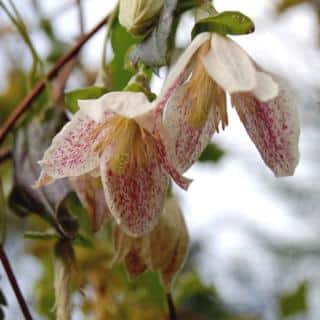 Ornamental assets: its cup-shaped flowers are remarkable with their creamy beige hue mottled with violet spots. Petals of this clematis stand out particularly well against the bright yellow stamens. Foliage is ornate, shiny, semi-evergreen to evergreen depending on the climate.
Ornamental assets: its cup-shaped flowers are remarkable with their creamy beige hue mottled with violet spots. Petals of this clematis stand out particularly well against the bright yellow stamens. Foliage is ornate, shiny, semi-evergreen to evergreen depending on the climate.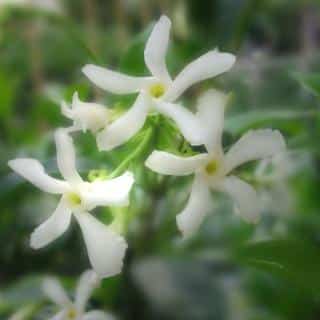 Ornamental value: The oval leaves of star jasmine are a shiny, dark green color. They’re covered with white starry flowers for a long time during the blooming. This abundant bloomer is a beautiful climbing vine that spreads a delicious scent around it.
Ornamental value: The oval leaves of star jasmine are a shiny, dark green color. They’re covered with white starry flowers for a long time during the blooming. This abundant bloomer is a beautiful climbing vine that spreads a delicious scent around it.
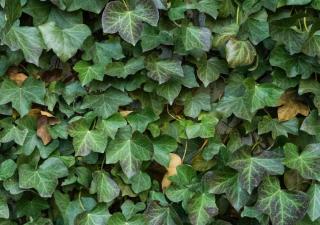 Ornamental value: this famous vine unfurls five-lobed leaves that are more or less variegated and veined, depending on the variety. Ivy is a versatile plant: it’ll settle in perfectly indoors, in a pot, as it will outdoors along a trellis. Its thick, fleshy leaves display a fresh green hue at first, and turn a deeper and deeper green as they grow older.
Ornamental value: this famous vine unfurls five-lobed leaves that are more or less variegated and veined, depending on the variety. Ivy is a versatile plant: it’ll settle in perfectly indoors, in a pot, as it will outdoors along a trellis. Its thick, fleshy leaves display a fresh green hue at first, and turn a deeper and deeper green as they grow older.
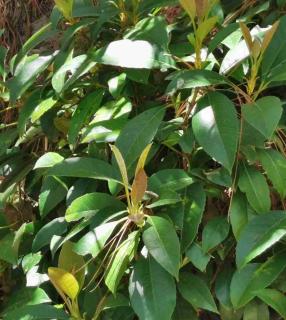 Ornamental assets: this type of climbing hydrangea offers beautiful shiny average green foliage, each leaf is oval and veins are well marked. As is typical of certain types of hydrangea, it grows beautiful creamy-white flower umbels in summer.
Ornamental assets: this type of climbing hydrangea offers beautiful shiny average green foliage, each leaf is oval and veins are well marked. As is typical of certain types of hydrangea, it grows beautiful creamy-white flower umbels in summer.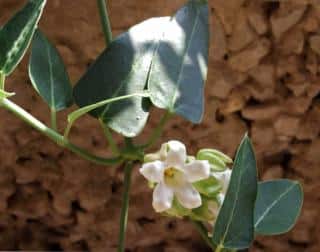 Ornamental value: its blue-green foliage with silvery undersides is accompanied by charming pink and white flowers. These are bell-shaped and have white petals with pink stripes.
Ornamental value: its blue-green foliage with silvery undersides is accompanied by charming pink and white flowers. These are bell-shaped and have white petals with pink stripes.
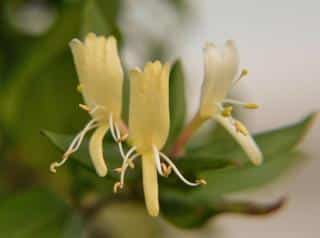 Appeal: bicolor white and cream-yellow flowers that appeal to all. Its clusters of tubular flowers release divine scents throughout the garden. Compact bearing and dense foliage make it the perfect pick for container growing.
Appeal: bicolor white and cream-yellow flowers that appeal to all. Its clusters of tubular flowers release divine scents throughout the garden. Compact bearing and dense foliage make it the perfect pick for container growing.
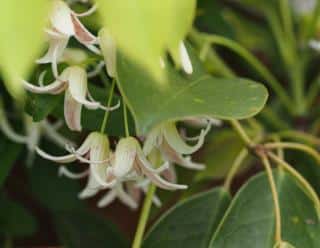 Ornamental appeal: beautiful leafage forming oval lobes, tender and shiny green. From this mass of foliage, small pinkish-white bell-flowers emerge. Memorable fragrance and quick growth are two advantages of this original vine.
Ornamental appeal: beautiful leafage forming oval lobes, tender and shiny green. From this mass of foliage, small pinkish-white bell-flowers emerge. Memorable fragrance and quick growth are two advantages of this original vine.
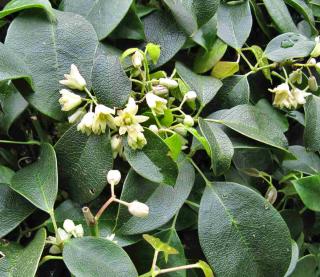 Appeal: this plant bears both male (light green) and female (pastel pink) flowers on the same stems, forming small bells. We find its abundant and lush foliage amazing, oval with a pointed tip, dark green in color.
Appeal: this plant bears both male (light green) and female (pastel pink) flowers on the same stems, forming small bells. We find its abundant and lush foliage amazing, oval with a pointed tip, dark green in color.Read also:
Truly disappointed to see English Ivy on this list. It is a well-known invasive plant in so many regions. As settlers we often don’t think of the impact that the plants we have brought over have on the natural environment but by continuing to plant invasive species that out compete native ones, we continue to harm the natural systems that existed for time immemorial before settlers arrived, just because we like the plant or it reminds us of home. English Ivy spread vegetatively aggressively but also by seed, so even if you aren’t adjacent to any natural habitat, birds can easily carry seed into natural systems where it can spread, choke out native ground covers including flowering species that native pollinators have co evolved with and contain the proper nutrition for, as well as climbing trees and choking them out. The berries are also mildly toxic to birds. It’s bad for other plants and wildlife and is one of BC’s worse invasive plants. It’s truly a shame that nurseries still sell it and that blogs like this still recommend it. I hope you reconsider taking this down and perhaps re-publish with the exclusion of invasive plants. Also that in other future articles you do your research on the invasive capacity of plants you want to promote. The world of Native Plants is a beautiful one and supports local biodiversity in its truest form, I Hope you will promote that and educate yourselves on that wonderful word too.
Dear Michelle, I am truly thankful for your comment. It is true that many plants have traveled across continents in the course of time, and our generation is the one discovering the deleterious effects of such imports. I do try my best to work on informing people about invasive plants. I wrote quite a few pages on Tamarisk, scotch and French broom, blood grass, russian olive… Readership is evenly split between the Americas and Europe, so what’s invasive in one place is native to the other.
I modified this article to include a note of caution about English Ivy for readers in America. I’m working on a way to have a message appear based on where people live (or at least what their computer IP address is) that could notify them of whether this or that plant is invasive in their area, but it’s a bit too technical and I am not going as fast as I’d like…
Thanks again for taking the time to write up such a useful and relevant comment. We do indeed have the same vision of gardening together with nature and not against it, so thanks for helping me by pointing such things out.
Sterile variety https://www.shelterwoodforestfarm.com/blog/2019/2/3/non-invasive-english-ivy
Thank you so much for receiving this comment the way it was intended and for adding the caveat about Ivy being invasive to the Americas. Our generation certainly has a lot of undoing of ecological damages and gardening in an environmentally friendly way is definitely one of them! I work for a Native Plant Nursery in the Pacific Northwest and am so encouraged by how many people want to support Native Pollinators through Native Plants, however so many people are still uninformed on the topic. I very much appreciate your pages on some of those invasive plants, it is so important to get this information out there! Thank you again and best wishes to you and the readership 🙂
Sure thing!